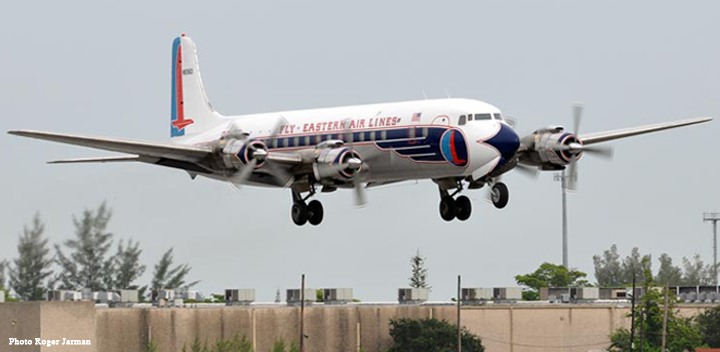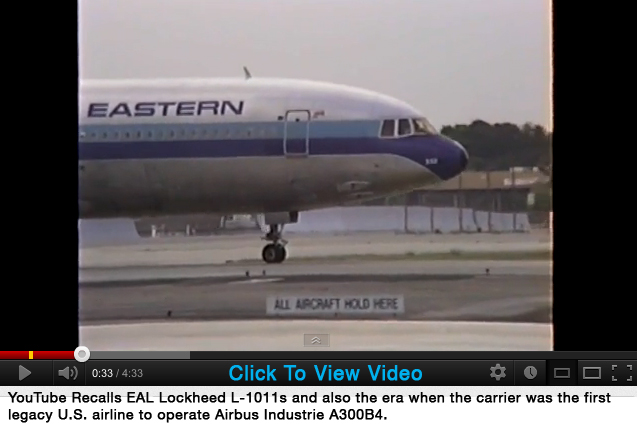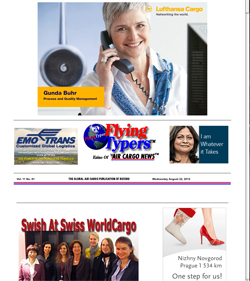 |
 |
|
| |
||
|
Vol. 11 No. 82 Monday August 27, 2012 |
|
It
isn’t at all inaccurate
to describe Saudia Cargo development
during the formative years of
the twentieth century as pioneering
amongst all carriers in the
Middle East, past and present,
as the Jeddah-based carrier
has continually led the way
in fielding an all cargo fleet
and thinking of cargo as critical
to its success in the transportation
business.
|
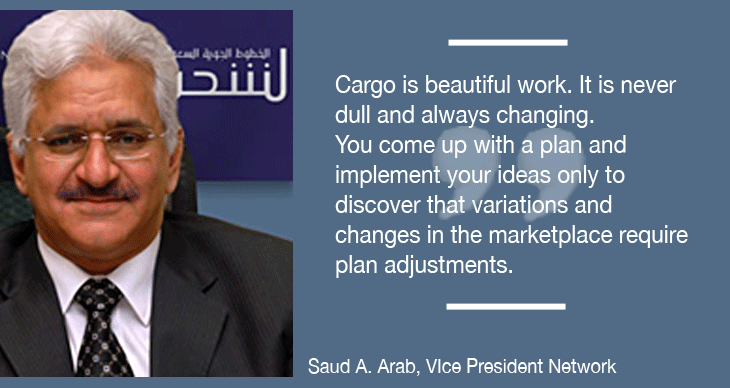 |
Now
with the airline having shortened
its name and officially called
Saudia, the carrier has stepped
out quickly, building its air
cargo destinations this year,
and is showing no slowdown as
2012 chugs along.
Earlier
this year, SV launched thrice-weekly
B747 freighter flights from
Benelux to Dubai.
That
move was followed quickly by
new freighter services into
Frankfurt and Vienna, plus additional
freighters twice weekly into
Saigon, linking Vietnam with
the Middle East and Frankfurt.
Despite
some challenging business in
2012, Mainland China found some
worthwhile connections, including
MD11F services from Guangzhou
(CAN) offering a direct freighter
connection to Brussels.
Currently
Saudia operates 180 flights
per week (both passenger and
all cargo) from the largest
manufacturing base in Southern
China to destinations in the
Middle East, Africa and Europe.
The
pattern of increasing services
and connectivity has continued
for Saudia Cargo during the
first half of 2012 with everything
from a third weekly freighter
from Dhaka, Bangladesh (DAC
– RUH – BRU), where
SV Cargo enjoys major market
position, to even more freighters
into N’Djamena (Chad)
that increased to twice weekly
via Jeddah.
Worth
noting is that in addition to
Accra, Saudia Cargo has established
an active presence in the African
market, currently flying to
Nairobi, Lagos, Addis Ababa,
N'djamena, Khartoum and Johannesburg.
An
interesting aspect to the accelerated
development at Saudia Cargo
is also that 2012 has seen widely
publicized new product initiatives,
including “Belly Flex,”
which utilizes both SVs big
passenger and cargo fleet with
an interesting, accessible,
well-priced cargo option.
A
quick look behind the scenes
shows a quartet of top executives
at the carrier, including Fahad
A. Hammad, Chief Executive Officer;
Mohammed Abdulaziz Linjawi,
Vice President Cargo Operations;
Saud Abdulgader Arab, Vice President
Network; and Peter Scholten,
Vice President Commercial.
Together,
this group of executives represents
over 100 years of service at
Saudia; the new person on the
block, Scholten, joined the
team three years ago after having
earned solid credentials in
air cargo sales and marketing
during 20-plus years at Martinair
Cargo.
We
point to Saudia Cargo management,
as we noted during our time
in Jeddah recently, when we
talk about just how well the
headquarters’ operation
seems to interact with each
other, moving about with a sense
of purpose and excitement.
One
more thing: these folks seem
to genuinely like each other;
they can be seen interacting
amicably whilst driving new
ideas and useful initiatives
with what appears to be a genuine
team effort.
Regular
readers of FlyingTypers
may recall our exclusive coverage
direct from Jeddah with Mr.
Hammad and Mr. Scholten.
Here
we spend a few moments with
Saud A. Arab, Vice President
Network.
As
the set-up indicates Mr. Saud
is quite busy “Imagineering”
and implementing the rapid development
and deployment of Saudia aircraft
and other resources needed to
build the SV air cargo business
around the world.
Mr.
Saud began his career with Saudi
Arabian Airlines over 30 years
ago as Coordinator Airline Association
Affairs for IATA.
His
impressive portfolio includes
work in both the passenger and
cargo sectors of the airline
industry.
He
has served at Saudia as Senior
Manager Cargo Tariffs &
Pricing, General Manager Cargo
Sales & Services Systems,
GM Cargo Marketing & Sales,
and VP Cargo Sales & Marketing.
Aside
from being responsible for the
airline, he is actively involved
in local IATA initiatives, which
is the driving force behind
the establishment of the CASS
Program in Saudi Arabia and
international IATA activities
such Tariff, Agency and Services
Conferences and IATA cargo policy
group.
Mr.
Saud, admits that like the lessons
of life, business of air cargo
in all capacities is best learned
“in touch with people,
in meetings face to face, and
out on the road in travels around
the world is something different
to what was studied in college.”
Mr.
Saud participated along with
others moving forward the wheels
of progress at Saudia Cargo
and especially the numbers that
drive the global markets the
airline serves since cargo was
formed into a profit center
in 1997.
He
admits that his down-on-the-ground
approach also means that he
has been able to track progress
and project future performances
on both a sophisticated set
of information metrics, including
hard numbers and also touch
and feel.
“Right
now, 60 percent of our business
is belly lift with 40 percent
carried aboard our freighters.
“Of
course, the newer generation
aircraft like the B777s are
hidden freighters unto themselves
with plenty of available lift.
“But
we have experienced continued
growth in our all-cargo fleet
that corresponds with the growing
percentage of cargo carried
aboard those aircraft, as we
have seen lately to India, where
the mix of cargo has been excellent.
“Looking
even further back, we really
saw the growth of freighter
traffic out of China, as early
on that was the traffic we carried
to and from the Kingdom.
“So
while we rely on belly lift,
our growing network continues
to fill up our freighters.
“Cargo
is beautiful work. It is never
dull and always changing.
“You
come up with a plan and implement
your ideas only to discover
that variations and changes
in the marketplace require plan
adjustments.
“For
example, once upon a time we
operated a freighter into Tokyo
and Taipei and did quite well
with it.
“By
and by, however, business migrated
to China, so we repositioned
our freighter into Hong Kong,
which had been an off-line station.
“So
today, in addition to HKG, we
have been serving Shanghai since
2005 and Guangzhou opened up
for us in 2007.
“Now
despite some challenges we are
thinking about serving some
other China destinations, including
Chengdu.
“Elsewhere,
we operate a great passenger
business into Dhaka.
“We
discovered that even though
we could move 18 tons per B747-400
passenger flight, the market
demanded more lift, so we added
a second freighter, and currently
now are operating freighters
thrice weekly into Dhaka.
“So
we keep a keen eye on data,
adding freighters, and our business
grows not only to the Kingdom,
but in the case of China the
overwhelming amount of tonnage
goes via Saudia to Europe.
“Of
course the downward pressure
to provide top-notch service
and deliver decent rates is
a constant whilst competing
with other network carriers
from China to Europe.
“So
the search for new markets is
constant as we are willing to
be early and grow with the business.
“The
most important thing you have
is data, and of course in many
cases realize potential and
are willing to grow with the
market.
“Of
course, management also needs
to have an expansion vision
about things, as has been a
constant factor here with Mr.
Fahad Hammad.”
In
terms of building new stations,
Mr. Saud notes that in addition
to the aforementioned data studies,
on-site visits are critical.
“Our
regional offices are quite helpful,
but on-the-ground visits by
our staff, and even just basic
common sense about staying close
to our business concept, is
vital.
“For
example, we do a lot of business
out of Germany.
“But
our Germany cargo had been trucked
to and from the Saudia hub at
BRU until March of this year,
when we moved to four-times-weekly
B747-400F directly into FRA,
rather than trucking to connecting
flights at BRU.
“Those
flight frequencies will increase,
by the way.
“Shippers
want all manner of services,
including rates, but high on
the list are direct flights.”
Further,
Mr. Saud says that the much
publicized night ban at Frankfurt
has not impacted Saudia operations
much, if at all.
“We
have seen night flight curfews
across Europe and elsewhere
in the world and we just operate
around them.”
“Looking
ahead to the remainder of 2012,
we are studying Libya, which
has always been a good market,
and we are looking at South
America. Moscow is also getting
larger into our view as Russian
business possibilities emerge.
“We
also believe the African markets
will continue to grow and are
benefitting from our commitment
to grow there.
“Our
Johannesburg business and cargo
from Nairobi has just been outstanding
during the past few years.
“We
started Lagos in 2007 with only
30 tons on the first flight.
“But
our belief in the market was
to commit ourselves to growth
and development there, and every
flight saw tonnage demand as
a second weekly flight was added.
“In
2012, just five years after
we began, we are operating into
Lagos daily.
“Saudia
will continue to grow and build
our cargo program with the belief
that we can deliver more to
both our business partners and
also the airline.”
We
wonder what Mr. Saud would do
if he were not in air cargo?
“It’s
a good time to be here,”
Mr. Saud A. Arab smiled.
Geoffrey
Circular
No 22/2012 – Customs addressed
to All Chief Commissioners of
Customs and Central Excise was
cut and dry in its bureaucratic
fashion, but it has brought
cheer to air cargo stakeholders
around the country. The circular
mentioned that “in order
to further facilitate importers
and exports, the (Central) Board
(of Excise and Customs) has
decided to begin on a pilot
basis 24/7 Customs clearance
with effect from September 1,
2012 at identified air cargo
complexes and seaports.” |
|
|
“My
years in the air cargo industry
have been full and rewarding.
“I
did things I never dreamed of
doing.
“I
made so many friends, both internationally
and domestically in the airline,
publishing, trucking, government,
and air freight forwarding/courier
industry that all enriched my
life.
“My
customers and friends as mentioned
are still today thought of like
family.
“What
stands out the most in memory
are close honest relationships
with all of these different
people working to solve so many
different problems in order
to lead to our business into
growth and expansion.
“It’s
worth recalling in 2012 that
half a century ago up until
1978, air cargo was regulated
in the USA by the Civil Aeronautics
Board (CAB).
“But
after deregulation as CAB dissolved,
we had no book of rules to follow
especially regarding rates.
“This
was a big bag of worms for all
in air cargo, especially those
of us calling on customers.
“Death
of CAB was the beginning of
‘spot rates, contract
rates’ and other special
pricing that dropped both yield
and revenue.
“I
remember a customer telling
me a competitor quoted ten cents
a pound from JFK to LAX and
they wanted me to match it.
“‘I
don’t think so,’
was my reply.
“In
contrast I remember Eastern
in the 1960s with only propjet
aircraft, and 40-plus years
later now we see fleets of all
cargo aircraft and a major increase
in global cargo capacity in
combination aircraft.
“I
find it remarkable how the industry
has changed and improved technologies
via computers, shipment data/tracking,
invoicing, claims, training,
and so much more.
“The
most important function that
hasn’t changed a lot is
the person-to-person contact
needed to make it all work.
“What
a flight my air cargo experience
has been for me.
“One
lasting feeling gained from
my years in air cargo pushing
back tens of thousands of shipments
is that tomorrow is another
day and who knows what the future
will bring?”
mladimer@aol.com
Geoffrey/Flossie
Get
On Board Air Cargo News
FlyingTypers |
If
You Missed Any Of The Previous
3 Issues Of FlyingTypers |
|||||
|
|||||
FT081512 |
FT082212 |
||||
|---|---|---|---|---|---|


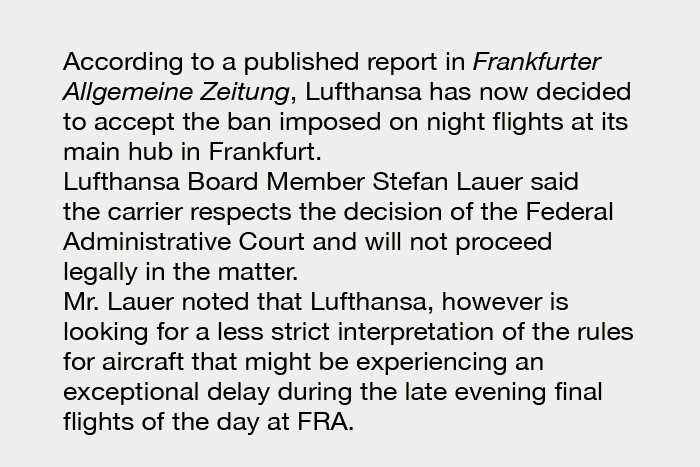
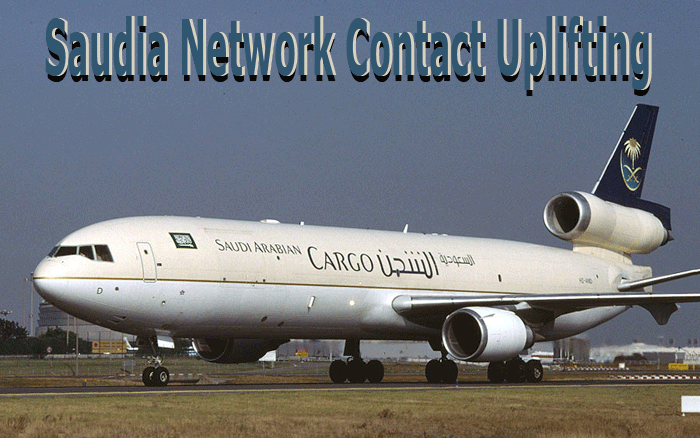
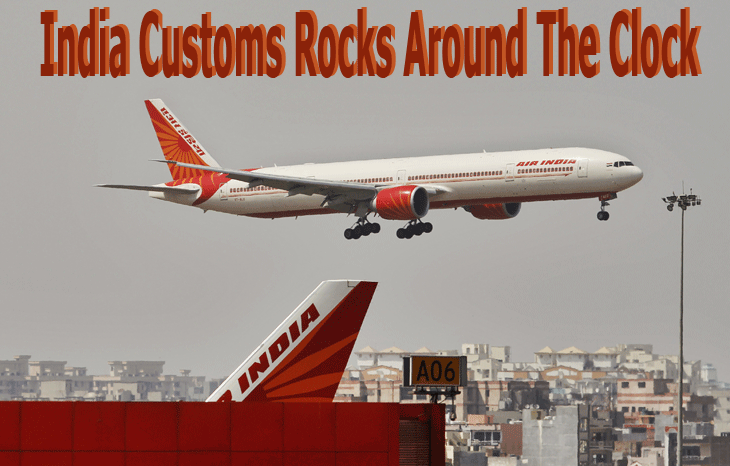
 Reacting to the order, M. Rafeeque
Ahmed, (left) the President
of the Federation of Export
Organizations (FIEO), commented
that the implementation of the
order would help in the speedy
clearance of import-export shipments.
“India’s ranking
will also improve as far as
ease of doing business in India
is concerned,” he said
and added that “this trade
facilitation measure will definitely
encourage the exporters and
India will be able to achieve
the set export target.”
Reacting to the order, M. Rafeeque
Ahmed, (left) the President
of the Federation of Export
Organizations (FIEO), commented
that the implementation of the
order would help in the speedy
clearance of import-export shipments.
“India’s ranking
will also improve as far as
ease of doing business in India
is concerned,” he said
and added that “this trade
facilitation measure will definitely
encourage the exporters and
India will be able to achieve
the set export target.” The new facility would enhance
the air cargo infrastructure.
According to Keshav Tanna, (right)
former President, Air Cargo
Agents Association of India
(ACAAI) and presently a member
on the association’s Board
of Advisors, the lack of efficient
infrastructure was the single
biggest hurdle to air cargo’s
growth. The industry, he pointed
out, was doing well but the
“authorities have not
been forthcoming in providing
the necessary infrastructure
air cargo demands.” He
emphasized the fact that while
in most “progressive”
countries shipments were cleared
within hours, “in India
we are still looking at days.”
As a result, such delays had
a direct impact on the supply
chain. Others from ACAAI gave
the example of the Mumbai Air
Cargo complex.
The new facility would enhance
the air cargo infrastructure.
According to Keshav Tanna, (right)
former President, Air Cargo
Agents Association of India
(ACAAI) and presently a member
on the association’s Board
of Advisors, the lack of efficient
infrastructure was the single
biggest hurdle to air cargo’s
growth. The industry, he pointed
out, was doing well but the
“authorities have not
been forthcoming in providing
the necessary infrastructure
air cargo demands.” He
emphasized the fact that while
in most “progressive”
countries shipments were cleared
within hours, “in India
we are still looking at days.”
As a result, such delays had
a direct impact on the supply
chain. Others from ACAAI gave
the example of the Mumbai Air
Cargo complex.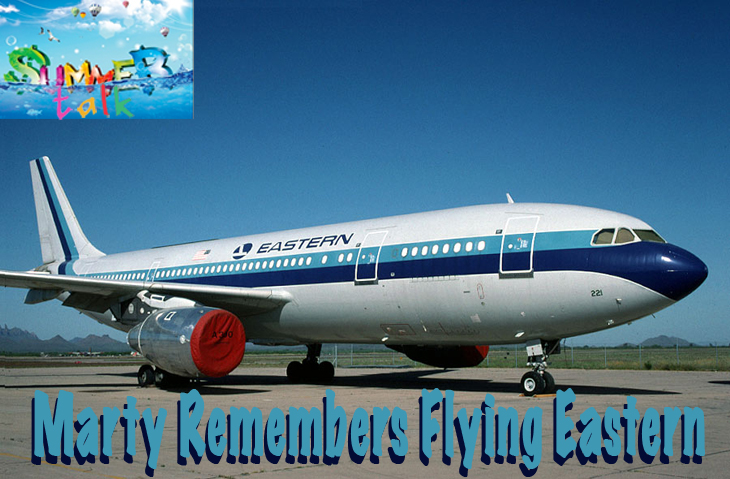
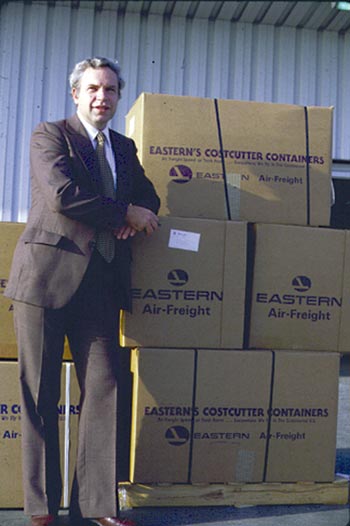 Every
time we think of the once-great
Eastern Airlines, a pioneer,
USA flag carrier almost forgotten
in 2012, thoughts drift back
to the large fleet of L-1011s
that the airline operated all
over the world, but especially
up and down the east coast of
the USA.
Every
time we think of the once-great
Eastern Airlines, a pioneer,
USA flag carrier almost forgotten
in 2012, thoughts drift back
to the large fleet of L-1011s
that the airline operated all
over the world, but especially
up and down the east coast of
the USA. Marty
Ladimer, (right) who headed
up Eastern Cargo fortunes into
quite a lively and money-making
business until final shutdown
of the rest of the carrier in
1991, recalls:
Marty
Ladimer, (right) who headed
up Eastern Cargo fortunes into
quite a lively and money-making
business until final shutdown
of the rest of the carrier in
1991, recalls: